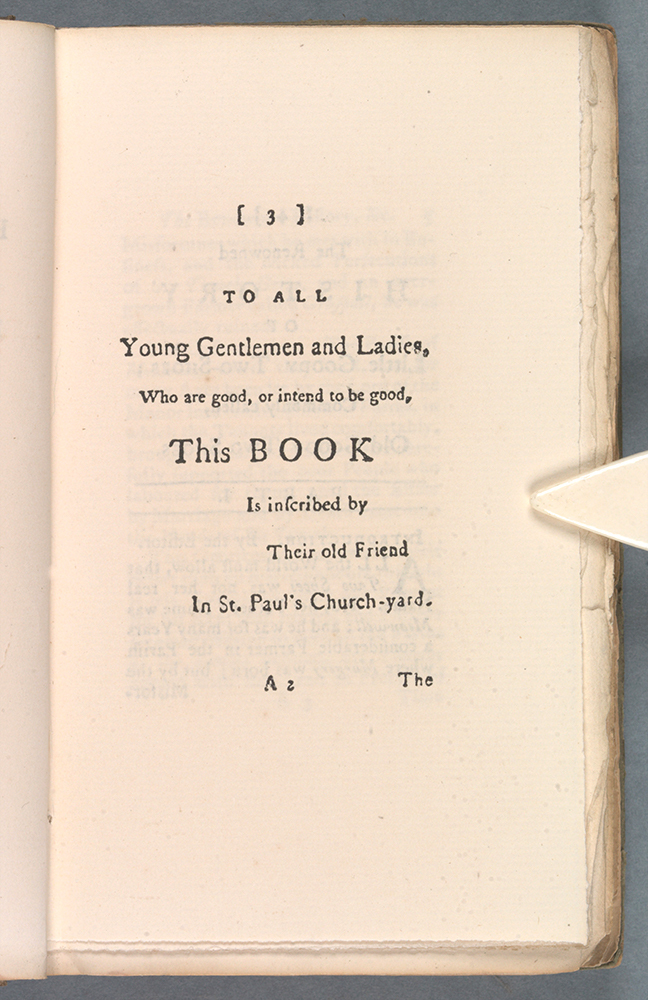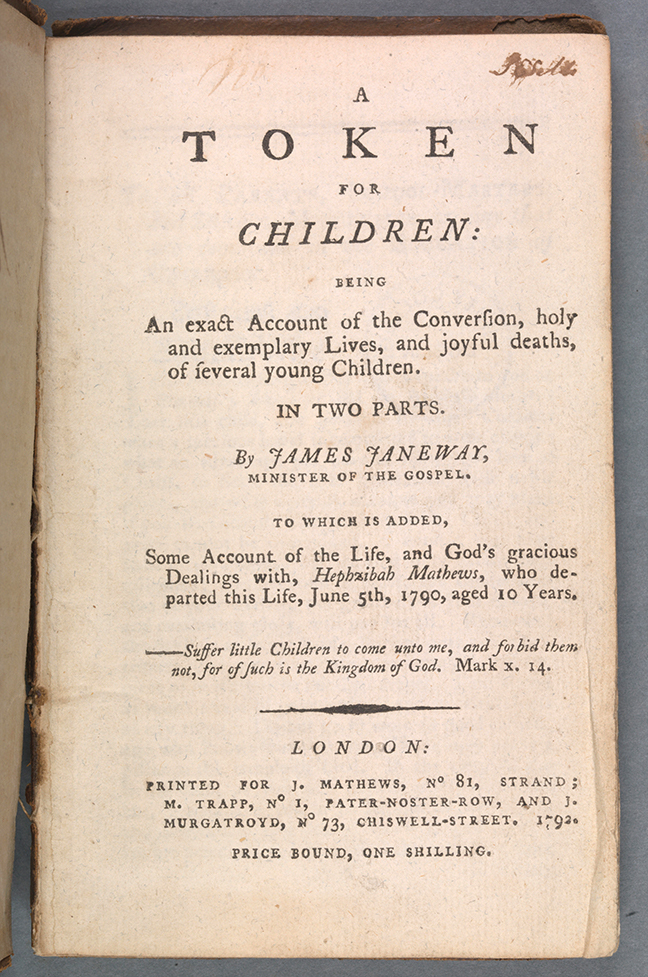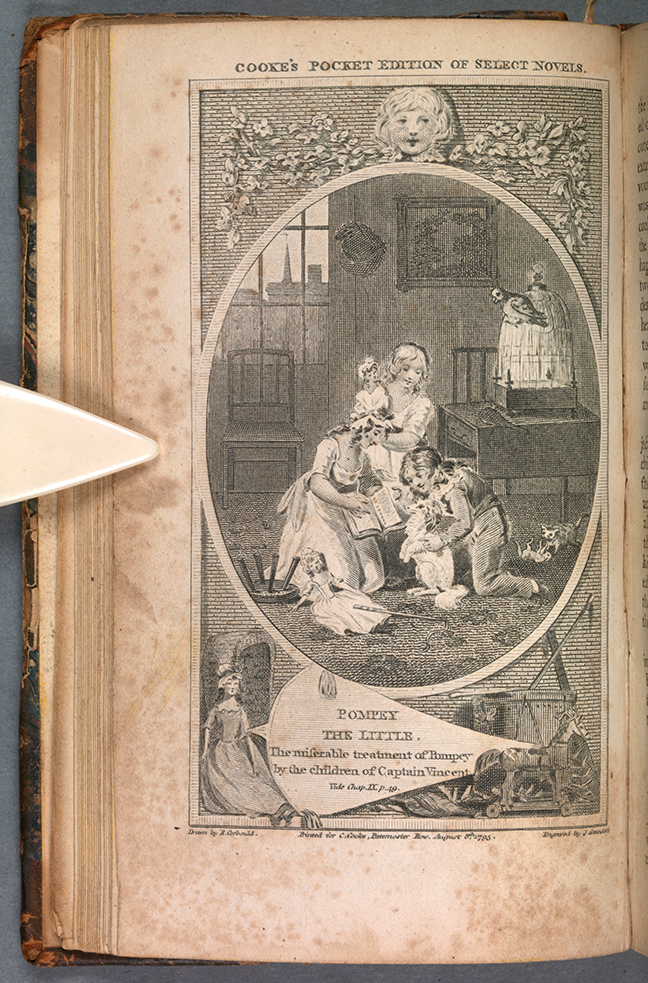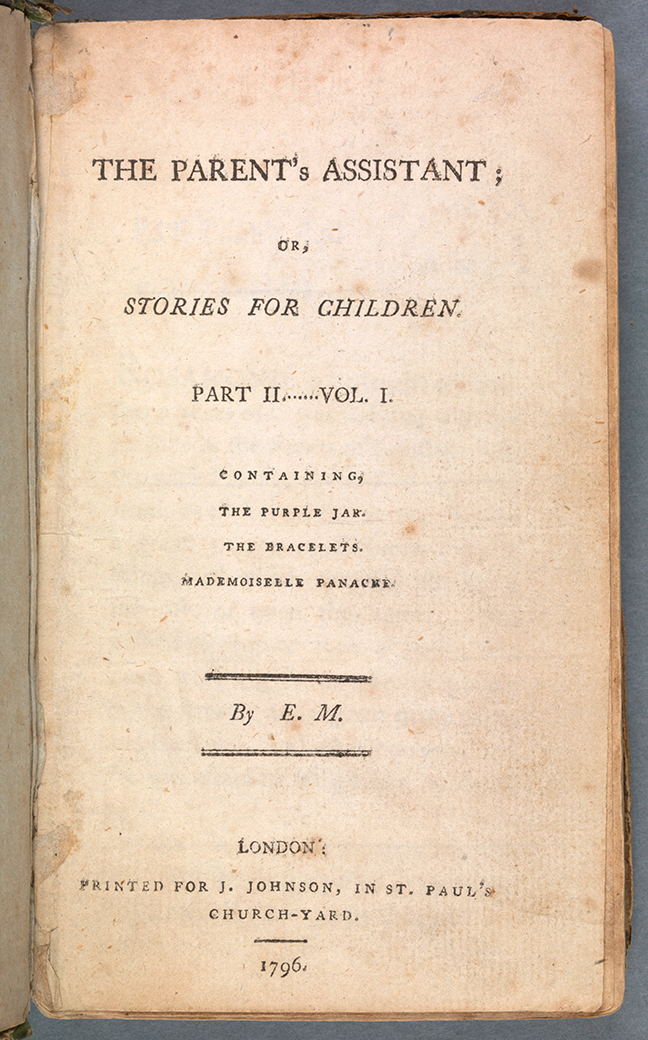This article is from the free online
The History of the Book in the Early Modern Period: 1450 to 1800


Reach your personal and professional goals
Unlock access to hundreds of expert online courses and degrees from top universities and educators to gain accredited qualifications and professional CV-building certificates.
Join over 18 million learners to launch, switch or build upon your career, all at your own pace, across a wide range of topic areas.

 Fig 1. John Newbery, A Little Pretty Pocket Book (Worcester, 1787), title page. © Wikimedia commons.
Fig 1. John Newbery, A Little Pretty Pocket Book (Worcester, 1787), title page. © Wikimedia commons.
 Fig 2. Anon. Goody Two-Shoes : a facsimile reproduction of the edition of 1766 (London, 1881), dedication page. © The Board of Trinity College Dublin.
Fig 2. Anon. Goody Two-Shoes : a facsimile reproduction of the edition of 1766 (London, 1881), dedication page. © The Board of Trinity College Dublin.
 Fig 3. James Janeway, A token for children: being an exact account of the conversion, holy and exemplary lives, and joyful deaths, of several young children. In two parts (London, 1792) title page. © The Board of Trinity College Dublin.
Fig 3. James Janeway, A token for children: being an exact account of the conversion, holy and exemplary lives, and joyful deaths, of several young children. In two parts (London, 1792) title page. © The Board of Trinity College Dublin.
 Fig 4. Francis Coventry, The history of Pompey the little; or, The life and adventures of a lap-dog (London, 1795?), plate facing p. 49. © The Board of Trinity College Dublin..
Fig 4. Francis Coventry, The history of Pompey the little; or, The life and adventures of a lap-dog (London, 1795?), plate facing p. 49. © The Board of Trinity College Dublin..
 Fig 5. Maria Edgeworth, The Parent’s Assistant (London, 1796), title page © The Board of Trinity College Dublin.
Fig 5. Maria Edgeworth, The Parent’s Assistant (London, 1796), title page © The Board of Trinity College Dublin.






